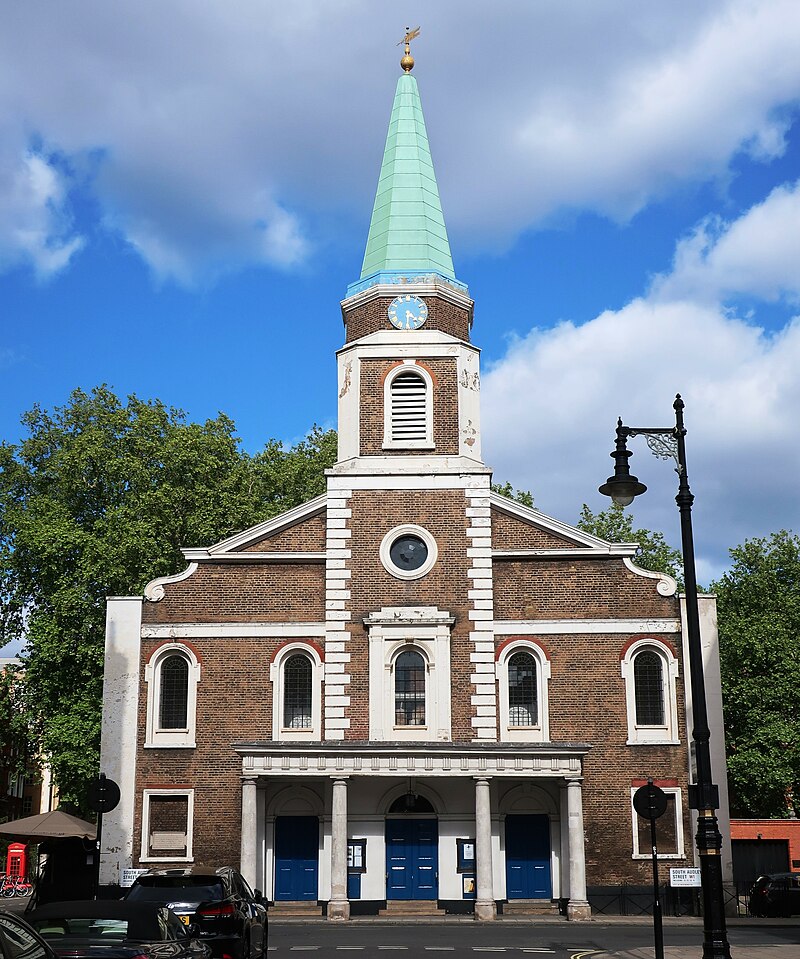by Susan Flantzer
© Unofficial Royalty 2024

Anna Luise Sophie von der Schulenburg; Credit – www.geni.com
The early kings from the British House of Hanover did not publicize their illegitimate children. King George I had three illegitimate daughters with his long-term mistress Melusine von der Schulenburg before he became King of Great Britain. At the time of Anna Luise Sophie’s birth her father, the future King George I of Great Britain, was the heir of his father Ernst August, Elector of Hanover, Duke of Brunswick-Lüneburg, Prince of Calenberg. George succeeded to those titles when his father died in 1698.

Anna Luise Sophie’s father King George I of Great Britain; Credit – Wikipedia
The British House of Stuart failed to provide a legitimate Protestant heir as required by the Act of Settlement of 1701. When Queen Anne of Great Britain died on August 1, 1714, George, Elector of Hanover, Duke of Brunswick-Lüneburg, Prince of Calenberg was the closest Protestant heir to the British throne. George’s mother was Sophia of the Palatinate, commonly called Electress Sophia of Hanover. Sophia was the daughter of Elizabeth Stuart, the second child and eldest daughter of King James VI of Scotland/King James I of England. Therefore, the Protestant, German-born George, Elector of Hanover, Duke of Brunswick-Lüneburg, Prince of Calenberg became King George I of Great Britain, the first monarch of the British House of Hanover, bypassing dozens of Catholics with a better hereditary claim to the British throne.
Anna Luise Sophie von der Schulenburg was born in January 1692, in Hehlen, then in the Electorate of Hanover, now in the German state of Lower Saxony, the daughter of the future King George I of Great Britain and his mistress Melusine von der Schulenburg. The family of her mother Melusine von der Schulenburg owned Hehlen Castle, so Anna Luise Sophie was probably born there. Anna Sophia’s paternal grandparents were Ernst August, Elector of Hanover, Duke of Brunswick-Lüneburg and Sophia of the Palatinate. Her maternal grandparents were Gustavus Adolphus, Freiherr (Baron) von der Schulenburg (link in German) and his first wife Petronella Ottilie von Schwencken.

Anna Luise Sophie’s mother Melusine von der Schulenburg; Credit – Wikipedia
Anna Luise Sophie’s mother Melusine von der Schulenburg came from an old Brandenburg noble family. Her father served as a member of the Brandenburg Privy Council. Melusine’s mother died in childbirth along with her last child. In 1690, Melusine became a maid of honor to Electress Sophia of Hanover, the mother of the future King George I. A year later, Melusine became George’s mistress. In 1694, George annulled his marriage to Sophia Dorothea of Celle after she fell in love with the Swedish Count Philip Christoph von Königsmarck, an officer in the Hanoverian army. Königsmarck disappeared and it was widely believed that George ordered Königsmarck’s death. Sophia Dorothea was banished to the Castle of Ahlden in her father’s territory of the Principality of Celle now in Lower Saxony, Germany. She was not allowed to remarry, would never again see her children, and was kept as a prisoner at the Castle of Ahlden until she died in 1727. George did not marry again and Melusine remained his mistress until he died, also in 1727.
Anna Luise Sophie had two younger full sisters:
- Petronilla Melusina von der Schulenburg (1693 – 1778), married Philip Stanhope, 4th Earl of Chesterfield, no children
- Margarete Gertrud von der Schulenburg (1701 – 1726), married Albrecht Wolfgang, Count of Schaumburg-Lippe, had two sons
Anna Luise Sophie had two half-siblings from her father’s marriage to Sophia Dorothea of Celle:
- King George II of Great Britain (1683 – 1760), married Caroline of Ansbach, had eight children
- Sophia Dorothea of Hanover (1687 – 1757), married Friedrich Wilhelm, Margrave of Brandenburg (later King Friedrich Wilhelm I in Prussia), had fourteen children
Melusine’s daughters were never openly acknowledged as George’s children. Instead, two of Melusine’s sisters and their husbands officially acknowledged them. Anna Luise and Petronilla, known as Melusina, were raised by Melusine’s sister Margarete Gertrud and her husband and distant cousin Friedrich Achaz von der Schulenburg. Margarethe was raised by Melusine’s sister Sophie Juliane and her husband Rabe Christoph, Count (Graf) von Oeynhausen.
In 1714, King George I made his state entry into London accompanied by his mistress Melusine von der Schulenburg, nicknamed “the Maypole” by the British because of her tall thin appearance. Melusine became a naturalized British citizen in 1716 and in the same year was created Duchess of Munster, Countess and Marchioness of Dungannon, and Baroness of Dundalk for life. In 1719, she was further created Duchess of Kendal, Countess of Feversham, and Baroness of Glastonbury and Somerset for life.

Prince House (Fürstenhaus); Credit – By Recherche, Scans, Arbeitsleistung gestiftet von: Bernd Schwabe in Hannover – eigenes “Werk” mit Hilfe einer dankenswerterweise geliehenen Kamera, CC BY 3.0, https://commons.wikimedia.org/w/index.php?curid=14876713
On December 31, 1707, Anna Luise Sophie married Ernst August Philipp von dem Bussche zu Ippenburg but the marriage was unhappy and childless. In 1716, Anna Luise Sophie’s husband caught her in bed with another man and divorced her. However, Anna Luise Sophie’s father remained fond of her. In 1720, King George I built the Prince House (Fürstenhaus), a small palace on the grounds of Herrenhausen Gardens in Hanover, now in Germany, for Anna Luise Sophie. King George II also arranged for Karl VI, Holy Roman Emperor to grant Anna Luise Sophie the title Grafin von Delitz (Countess of Delitz) in 1722. Eventually, Anna Luise Sophie sold the Prince House and bought a house in the Paddington section of London. However, the Prince House is still owned by the German Hanover family.

Grosvenor Chapel where Anna Luise Sophie is buried with her mother; Credit – By GrindtXX – Own work, CC BY-SA 4.0, https://commons.wikimedia.org/w/index.php?curid=90320190
On November 2, 1773, 81-year-old Anna Luise Sophie died at her home in London. She requested to be buried with her mother at Grosvenor Chapel in South Audley Street, London, England. Her sister Melusina was buried at Grosvenor Chapel when she died in 1778.
This article is the intellectual property of Unofficial Royalty and is NOT TO BE COPIED, EDITED, OR POSTED IN ANY FORM ON ANOTHER WEBSITE under any circumstances. It is permissible to use a link that directs to Unofficial Royalty.
Works Cited
- Beauclerk-Dewar, Peter & Powell, Roger. (2006). Right Royal Bastards – The Fruits of Passion. Burke’s Peerage & Gentry LLC.
- Flantzer, Susan. (2015). King George I of Great Britain. Unofficial Royalty. https://www.unofficialroyalty.com/king-george-i-of-great-britain/
- Flantzer, Susan. (2020). Melusine von der Schulenburg, Duchess of Kendal, Mistress of King George I of Great Britain. Unofficial Royalty. https://www.unofficialroyalty.com/melusine-von-der-schulenburg-duchess-of-kendal-mistress-of-king-george-i-of-great-britain/
- Melusine von der Schulenburg, Duchess of Kendal. (2024, July 16). Wikipedia. https://en.wikipedia.org/wiki/Melusine_von_der_Schulenburg
- Weir, Alison. (2008). Britain’s Royal Families – The Complete Genealogy. Vintage Books.




















